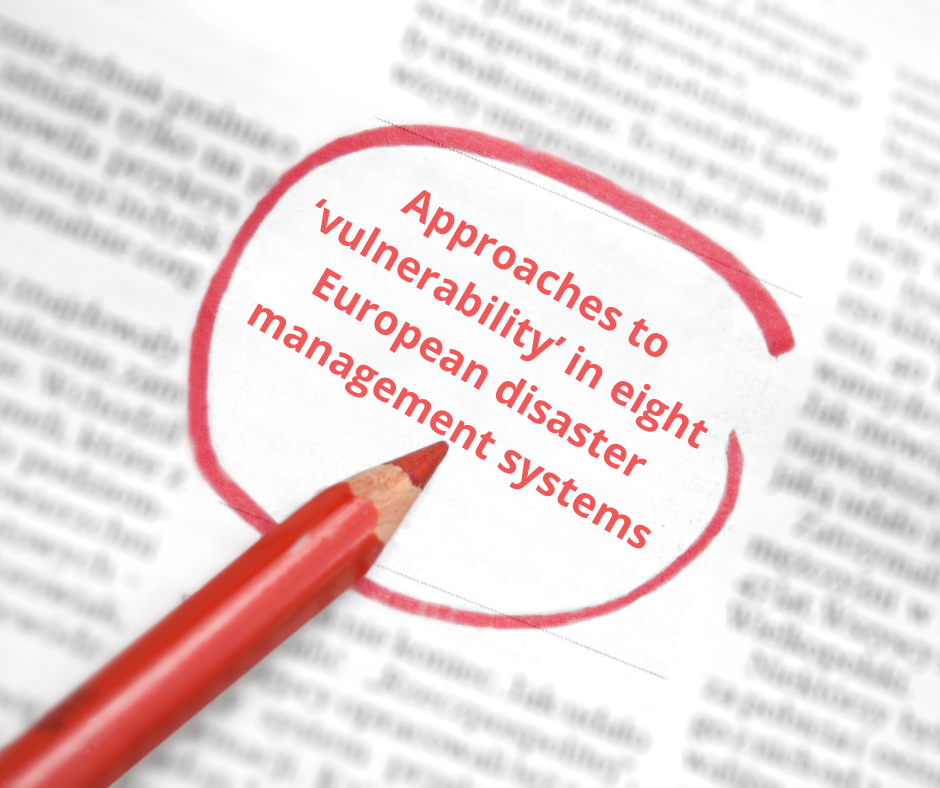While social vulnerability in the face of disasters has received increasing academic attention, relatively little is known about the extent to which that knowledge is reflected in practice by institutions involved in disaster management. In this study, we chart the practitioners’ approaches to disaster vulnerability in eight European countries: Germany, Italy, Belgium, Hungary, Sweden, Norway, Finland, and Estonia.
The study draws from a comparative document analysis and 95 interviews with disaster managers and reveals significant differences across countries in terms of the ontology of vulnerability, its sources, reduction strategies, and the allocation of related duties.
If you want to download the complete publication, click here
